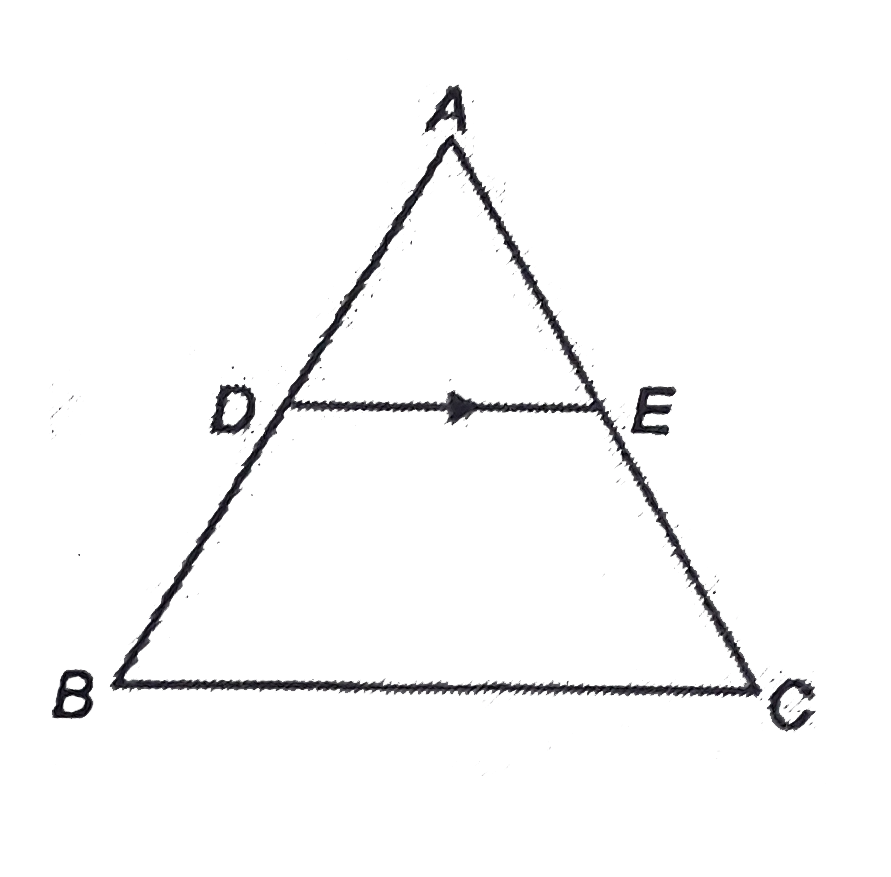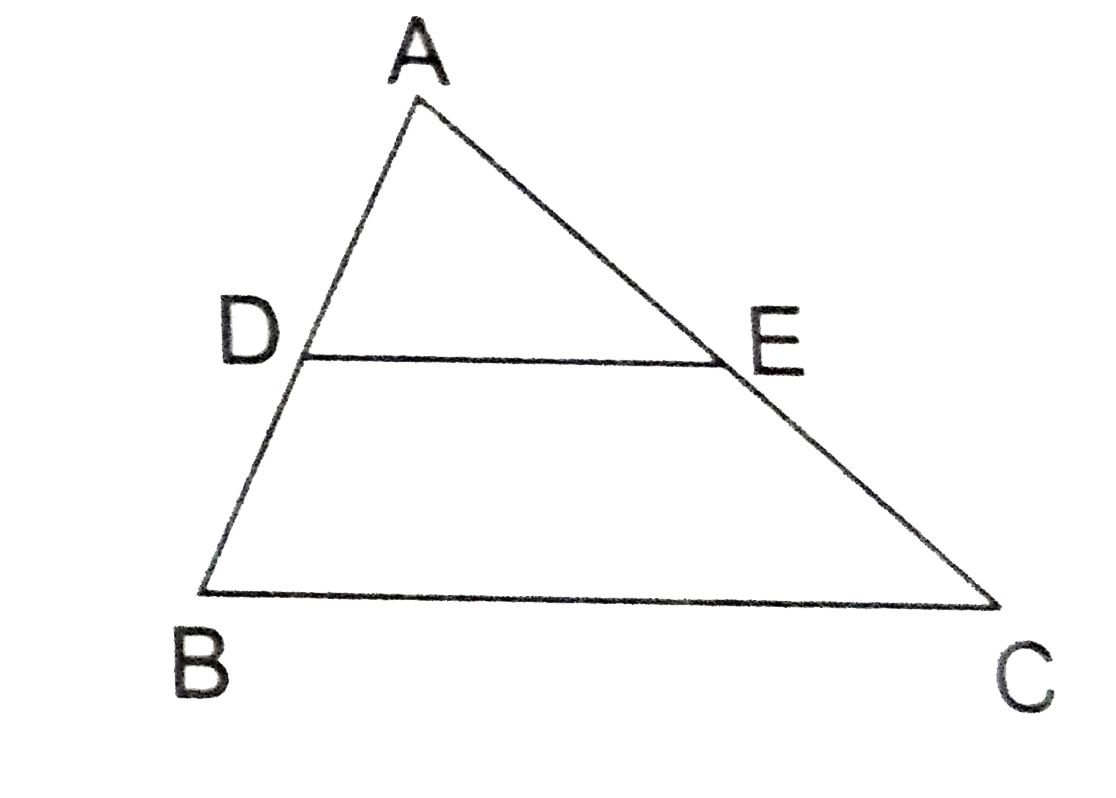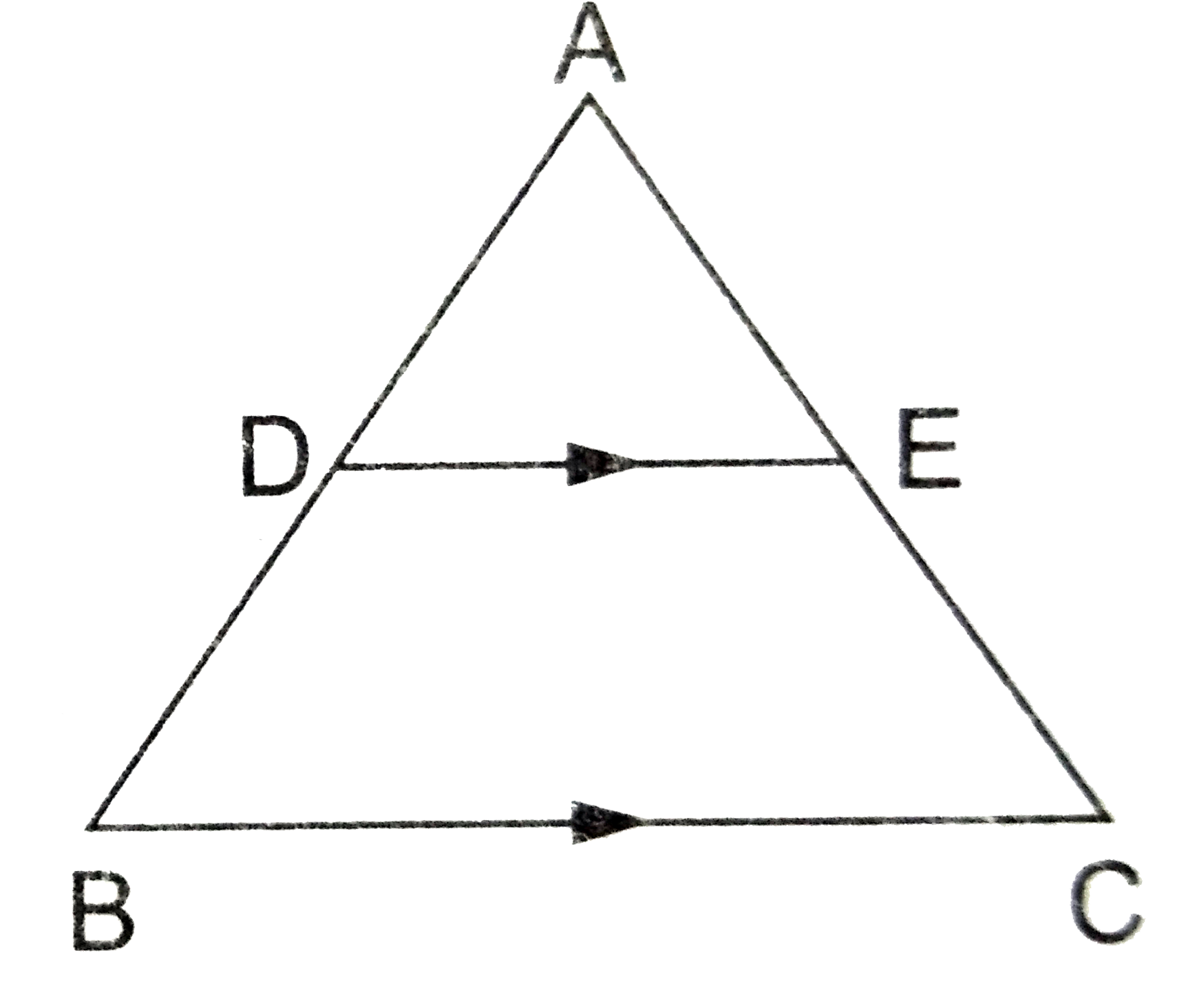In the given figure, in ΔABC,DE∣∣BC so that AD=(4x−3)cm,AE=(8x−7)cm,BD=(3x−1)cmandCE=(5x−3)cm . Find the value of x.
Video Solution
Text Solution
In ΔABC,DE∣∣BC
ADBD=AECE ( by Thale's theorem)
4x−33x−1=8x−75x−3
( 4x-3) (5x-3) = (8x-7) (3x-1)
20x2−27x+9=24x2−29x+7
4x2−2x−2=0
2x2−2x+x−1=0
2x(x−1)+1(x−1)=0
(2x+1)(x-1)=0
x=1 or x= −12
But when x=−12
AD=[4×(−12)−3]=−5
since distance cannot be negative so x≠−12
Hence x = 1

|
Topper's Solved these Questions
- TRIANGLES Book:NAGEEN PRAKASHANChapter:TRIANGLES Exercise:Problems From NCERT/ Exemplar
Explore 14 Videos
- TRIANGLES Book:NAGEEN PRAKASHANChapter:TRIANGLES Exercise:Exercise 6a
Explore 23 Videos
- STATISTICS Book:NAGEEN PRAKASHANChapter:STATISTICS Exercise:Revision Exercise Long Answer Questions
Explore 5 Videos
- VOLUME AND SURFACE AREA OF SOLIDSBook:NAGEEN PRAKASHANChapter:VOLUME AND SURFACE AREA OF SOLIDSExercise:Revisions Exercise Long Answer Questions
Explore 5 Videos
Similar Questions
Knowledge Check
In a square ABCD, AB=(2x+3) cm and BC=(3x-5) cm . Then , the value of x is
A4B5C6D8In a square ABCD,AB=(2x+3)cmandBC=(3x−5)cm . Then, the value of x is
A5B7C8D10
In the given figure, DE∣∣BC such that AD=xcm,DB=(3x+4)cm,AE=(x+3)cmandEC=(3x+19)cm. Find the value of x.

View SolutionIn the given figure, DE∣∣BC such that AD=xcm,DB=(3x+4)cmAE=(x+3)cm,andEC=(3x+19)cm. Find the value of x.

View SolutionIn a square ABCD, AB = (4x + 3) cm and BC = (5x - 6) cm. Then, the value of x is
View SolutionIn ΔABC,DE∣∣BC so that AD==2.4cm,AE=3.2cmandEC=4.8cm, then , AB= ?

View SolutionIn the given figure AD = 4 cm BD = 3 cm and CB = 12 cm . Find the value of cot θ

View SolutionIn the figure if DE||AB, find the value of x . Given AD= (x-4).
DC= 4cm, EB= (3x-19) cm and EC= (x-3) cm.

View Solution



